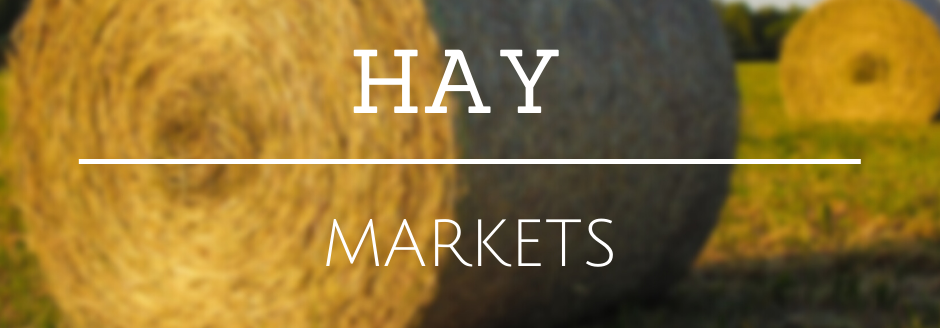State-By-State Hay Summary
Colorado—In the April 15 report, compared to last week, trade inactive on feedlot and dairy hay across the state. Trade activity very light on good demand for stable and retail quality hay. In southeast Colorado, all trades were on horse hay with prices steady. Southwest Colorado trade on retail hay with steady prices. Mountains and northwest Colorado trades on retail hay with prices steady. Trade inactive in the San Luis Valley and northeast Colorado areas.
Missouri—In the April 15 report, compared to last report, the supply of hay is moderate, demand is light to moderate and prices are steady. Field work continued to be limited following last week’s rains. A little more fertilizer got spread in the southwest but many other areas remained pretty soggy. Hay fields and pastures are growing well although some below average temperatures are keeping them from really taking off. This could however potentially result in a better quality first cutting as the grass won’t out grow its ability to draw up nutrients.
Nebraska—In the April 15 report, compared to last week, alfalfa, grass hay and ground and delivered forages steady. Dehydrated alfalfa pellets and sun-cured alfalfa pellets steady. Demand was good for alfalfa hay with moderate to good demand for grass hay. Quite a lot of alfalfa in round and square bales going out of state. Snow possible in some areas and is not ideal. This precipitation will help start new grass growth is these dry regions of the state. Some new seeding of alfalfa is planned. Not as many acres going to alfalfa since corn and soybeans futures have been trading sharply higher and should bring a profit to the farmer this fall. Standing alfalfa hay price was talked about on calls but, final price for first cutting has not been determined.
Oklahoma—In the April 15 report, compared to the last report April 1, hay trade remains somewhat slow as spring is around the corner. Many producers are reporting that with the current cool nights alfalfa fields are in rough conditions and a very tough first cutting could be mostly grinder hay. No trades of ground alfalfa this week for a trend. Demand remains moderate as most feed yards and dairies seem to be current as of now. Demand remains light to moderate for farmers and ranchers as grass is starting to grow.
Texas—In the April 16 report, compared to the last report, hay prices remain firm in all regions. The majority of the cattle producers are still supplementing feed with grazing being tight in most regions. Hay demand is still very good, but supplies have tightened. As a result, hay prices are very firm with some hay coming into the state from Nebraska and South Dakota since many of our neighboring states are fighting drought conditions as well. Hay producers continue to do field prep to gear up for first cutting. Due to limited sales and price changes this report will be released bi-weekly until more volumes of hay is moving. Next report will be April 30.
Kansas—In the April 20 report, compared to the last report, hay market prices were steady across the state on limited test with lots of field work being performed. Demand was light to moderate as the green up begins and feeding slows with cattle being turned out and feeders switch to summer rations. Folks have been busy spraying for weeds and pests, with both weevil and aphids making their appearance in fields. However, with a late April snow this week, hay producers are holding their breath that young alfalfa does not receive freeze damage. The western third of the state remains in abnormally dry to moderate drought conditions but thankfully, has not worsened in the last several weeks.
New Mexico—This report will resume in the spring of 2021.
South Dakota—In the April 16 report, compared to last week, few reported sales this week, alfalfa hay rather steady. Moderate demand for alfalfa, best demand remains from out of state dairies for large squares of higher testing alfalfa. Light demand from in state buyers as the mild winter reduced the need for supplemental hay feeding. Light demand for corn stalks and straw, again due to the mild winter as cattle did not need the bedding that they normally would. Colder weather set in across the state this week, stopping any green up and growth of alfalfa and grass. Area hay auctions still seeing large volumes of hay being offered as the supply remains plentiful.
Wyoming—In the April 15 report, compared to last week all reported hay sold steady on a thin test. Still some people looking to buy large and small squares of hay. Much need moisture in several areas of the state. Most precipitation coming down as snow. People may be particular of the moisture they are receiving but the very parched ground is not. Nice heavy snow will help green up pastures and hay fields when it warms up. All contacts said they have their barley planted. Some has germinated and is waiting for warm spring like weather to bring it out of the ground.
Montana—In the April 16 report, compared to the last week, hay sold full steady. Demand was mostly good. Hay movement was light to moderate this week. Some ranchers are starting to buy hay to ensure they have enough feed to make it until first cutting. Many ranchers are worried about grass and range conditions due to a very dry winter and very little spring moisture. Hay producers report that demand for new crop hay is good to very good, however few are willing to step out and contract hay. Hay supplies continue to tighten across the state. Many producers are completely out of hay for the year. The majority of hay left is good and higher quality hay. Hay is starting to ship into North Dakota and northern South Dakota as these states are extremely dry.
